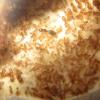Hello Antlovers! I'd like to share my problem with you guys, and hopefully obtain some insights as well. So, I live in the Philippines, I keep several species of ants of varied sizes. The species I would like to talk about in this post are the smallest I keep at the moment. So here are the species:
Subfamily: Myrmicinae
Monomorium floricola
Subfamily: Dolicherinae
Tapinoma melanocephalum
Tapinoma emeryi
My problem lies in the housing. Most of my other ants live in grout/perilite mix nests or Pumice nests but that's only because they are big enough not to get through. However, these tiny species have tiny queens as well so it wouldn't be hard for them to actually slip through tiny holes that I might miss. Now I would like to get some insights on how to house these species. Any help is welcome.
Edited by Myrmecologeek, December 11 2013 - 10:33 PM.


















